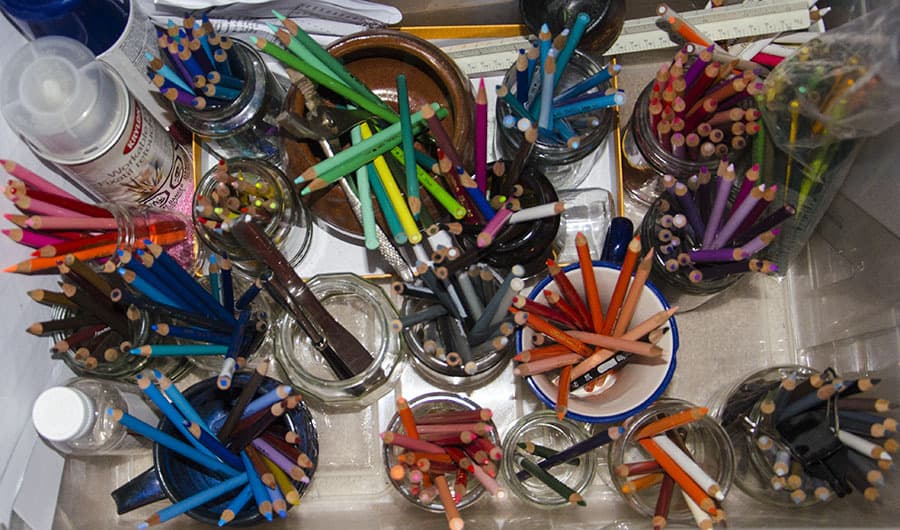Blog
The Art of Pencil Crayon Painting 1

Pencil crayons are a wonderful medium for making art. With quality crayons, lightfast pigments, acid free paper and archival framing, your art works will stand the test of time. It is a medium that invites experimentation. If you engage in testing the limits of the medium, you will find your unique relationhip with the materials and your artistic vision.
After Alyona Nickelsen described pencil crayon art work as “painting” in her book “Colored Pencil Painting Bible – Techniques for Achieving Luminous Color and Ultrarealistic Effects), I stopped referring to my pencil crayon works as “pencil crayon drawings”, or “sketches” as I agree that they are not to be diminished as drawings or sketches. This is not because sketches and drawings are lesser art forms, but because the public tends to view them as such. About 10 years ago I submitted some pencil crayon works to a charity auction and called them sketches. They were classified as “crafts” rather than artworks and I was truly miffed.
Pencil crayon works need not suffer ‘oil paint envy’. Pencil crayon works on archival quality paper with high quality pencil crayons that are more lightfast and durable than non-artist grade crayons do meet the standard of long-lasting art work that should with proper care, last generations. The idea that some art forms are “art” while others are “crafts” because of the materials used is ridiculous. Even ephemeral works can be high art so get over it!
Nevertheless, high art and high culture aside, as an artist you want to make an enduring work worthy of being cherished down the generations. It is your ticket to immortality after all. It is not enough to just have good materials and find someone who says that this pencil crayon brand or that rag paper is the best. You need to find the ideal working relationship among materials to achieve the type of artwork you want.
Personally I have difficulty getting the right paper. Hot press, archival quality rag papers, behave differently, depending on how I might be using the pencil crayons to get the effect I want. You need to experiment with papers to see what works for you. If you are like me and do complementary underpaintings and hard burnished intense colour areas, you need paper that will take pencil crayon smoothly and evenly, independently of the actual texture of the paper. You also need paper that will withstand the abuse of multiple layers of colour, burnishing and repeated erasure.
As I will discuss later, regarding pencil crayon brands, some pencil crayons will keep taking more colour layers even after being burnished, while others do not. Some pencil crayon colours are transparent and others opaque. That means that when you layer colours, some colours mask the under layers too much and a transparent colour is needed. This is common in oil painting and water colour and you can use this to your advantage. It helps to understand pigment and pigment vehicles which in pencil crayons are the waxy or oil based compounds that form the “lead” in your crayons. Having a good understanding of the materials you work with can help to understand why you are not getting an effect you expect or how you got an effect you would like to repeat. So, experiment, keep notes and push the boundaries of what you know. The materials you eventually select may be uniquely fitted to your artistic style and take your art work to another level.